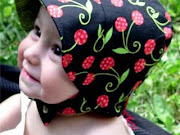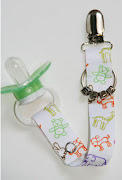By Elizabeth Pantley, Author of The No-Cry Nap Solution
Is your child a cat-napper? Does your baby fall asleep being fed, while in a car seat, sling, rocker, or someone’s arms? When transferred to bed, does your baby then sleep 30 to 50 minutes? That’s the exact length of one sleep cycle. These factors combined define the main cause of mini-naps: an inability to fall asleep or stay asleep without aid – your baby wakes fully at the end of the first sleep cycle, resulting in a too-short nap. I refer to this problem as One-Cycle Sleep Syndrome (OCSS). This leads us to understand the reason that many babies are cat-nappers and also directs us to potential solutions.
Cycle-Blender Naps
One way to help your baby sleep longer is to put him for a nap in a setting that will lull him back to sleep when he wakes between sleep cycles. Cycle-Blender naps occur in slings, cradle-swings, rocking cradles, or baby hammocks. Any of these can help cat-nappers extend their sleep time because when Baby begins to awaken the rhythmic motion can lull him back to sleep.
You can also create a Cycle-Blender nap in a stroller. Take a daily walk outside (it’s good for both of you!) or bring your stroller in the house. Walk your baby until she falls asleep, and then park the stroller near you. If she starts to move about, resume walking or give her a bit of a bounce and jiggle.
Once your baby gets used to taking a longer nap in the stroller, you can make a transition to bed naps. Start by reducing the movement, rolling slower and for less time. After your baby is asleep, park the stroller, using the jiggle if she wakes mid-nap. Over time, let your baby fall asleep in the stationary stroller parked next to his crib, and when the nap habit is in place, change to naps in the crib.
Create a Sleep-Inducing Bedroom
Light, noise or an absence of noise can all cause a cycle-shifting napper to wake up fully instead of falling back to sleep. To encourage longer naps, keep the sleeping room dark so that bright light doesn’t keep him alert between sleep cycles. To soothe your child through sleep cycle changes, use white noise (a recording of nature sounds), or relaxing music. Keep this turned on all through naptime. It will mask the noises that can wake a child who is shifting through sleep cycles. This also creates a powerful sleep cue, and if it is portable -- like a CD or travel sound alarm – can be taken with you for away-from-home naps.
Build a Better Bed
To entice your baby to have a longer nap, recreate the crib into a cozier nest. Use softer sheets, such as flannel, plus a thicker, softer crib mattress pad. You can also warm the bed surface before naptime with a towel fresh from the dryer (remove this and test the surface before laying your baby down.)
Make the Bed a Familiar Place
Let your baby have several play sessions in his crib during waking hours. Stay with him, engage his interest and introduce a few new toys. Let him see you as a part of the crib experience so that he gets a happy feeling being there. This way, when he is put in his crib for naptime and wakes up mid-nap it won’t be a lonely, foreign place, but one that carries familiar memories of fun times with you. This can help him accept it as a safe place for sleep and allow him to fall back into slumber after that first sleep cycle.
Interpret Signs of Tiredness
If you put your child for a nap before he is tired, or when he is overtired he won’t sleep as well as when you hit that ideal just-tired moment. Observe your child for signs of tiredness, such as losing interest in toys, looking glazed, becoming cranky, or slumping in his seat. Put your child for a nap the moment you see any sign of fatigue. If you take note of the time that this occurs over a week you should see a pattern emerge. This can help you set up a daily nap schedule that suits your child’s tired times perfectly.
Gauge time spans between naps
In addition to signs of tiredness also watch to see how long your child has been awake. Children can only stay happily awake for a certain period of time until they receive a biological pull towards a nap. Once that “pull” begins your child becomes fatigued and his cheerful mood begins to deteriorate. Each child has unique sleep needs, but this chart shows the typical span of time a child can stay happily awake:
| Age | Awake time span |
| Newborn | 1 – 2 hours |
| 6 month old | 2 – 3 hours |
| 12 month old | 3 – 4 hours |
| 18 month old | 4 – 6 hours |
| 2 year old | 5 – 7 hours |
| 3 year old | 6 – 8 hours |
| 4 year old | 6 – 12 hours |
Keep in mind that children grow and change and their nap schedule should change with them. What’s perfect today may be different than what is perfect next month. Keep your eye on your child and on the clock.
*~*~*~*~*~*~*~*~*~*~*~*~*~*~*~*~*~*~*~*~*~*~*~*~*~*~*~*~*~*~*
This is a copyrighted excerpt from The No-Cry Nap Solution: Guaranteed Gentle Ways to Solve All Your Naptime Problems by Elizabeth Pantley. (McGraw-Hill, December 2008). Used with permission.
The No-Cry Nap Solution: (Links)
Elizabeth’s Website
http://www.pantley.com/elizabeth






















No comments:
Post a Comment